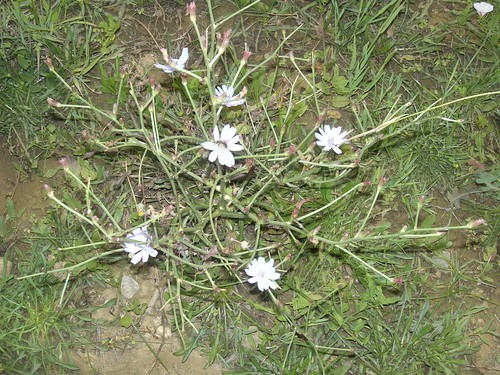Fifteen years on, stamnagathi is now available all year round, is widely cultivated on the island (ie not organic de facto any longer), goats don't even get near it these days, and what's more, it's cheap. This year, stamnagathi was hardly ever sold more than 5-6 euro a kilo; it's now available at less than 4 euro (I saw it just a few days ago selling at 3.14 a kilo). It's also widely used in both cooked and uncooked salads; its novel use in the modern kitchen has given it a new lease of life and greater attention on the part of food connoisseurs. One could call it a kind of fashion in modern Greek and Cretan cuisine.
This sounds like great news for all those people who love stamnagathi, and know its benefits. As with all crops that have undergone widespread cultivation, stamnagathi has now changed in taste and appearance, something that is inevitable when a crop is grown differently. Stamnagathi may now lack the slightly bitter taste it used to have, or the wild, dark green appearance of the leaves, but it is still very tasty. These days, it has a brighter green colour, and the roots, which can be the tastiest part (at least, they are for me), can be a little tough; it is now allowed to grow very large, which means it is not as tender as it used to be, but it brings in more profits for the grower, even though its price has now fallen. The roots soften on boiling but sometimes need more cooking time than the wild variety.
The flower of the stamnagathis (spiny chicory - Chicorium spinosum) is actually blue-mauve, which didn't come out very well in this photo.
Wild stamnagathi used to be plentiful, but because most people now own a car that can take them to normally inaccessible areas, it has suffered the ravages of over-foraging. Pretty soon it will become an endangered species. Life is changing on the island - and so is the food.
©All Rights Reserved/Organically cooked. No part of this blog may be reproduced and/or copied by any means without prior consent from Maria Verivaki.


This is so interesting.. and yet, depressing :( It's like the plot from a bad movie or something. I appreciate you teaching us though.. some lessons are just more difficult to learn, eh?
ReplyDeleteIt is a shame that this green is becoming less available in the wild, does this mean that people are keeping to the old ways.
ReplyDeleteIs this the chicory with the little blue flowers, Maria?
ReplyDeleteyes, they do have little blue flowers at the end of their season - i will try to find some to photograph them for you
ReplyDelete"...not organic de facto any longer), goats don't even get near it these days,"
ReplyDeleteHmmm is there a correlation between the stamnagathi not being organic and the preferences of the goats on the island??? :-D
Nice to visit again, Maria!
ReplyDelete